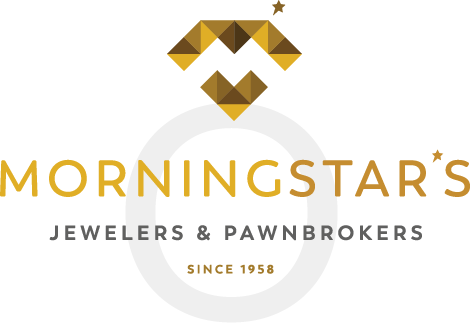Los mejores lugares para comprar relojes de segunda mano en línea (sin riesgo)
Comprar un reloj de lujo de segunda mano en línea debería ser emocionante, no causar ansiedad. Y sin embargo, para la mayoría de las personas, incluso compradores experimentados, el proceso está lleno de dudas. ¿Puedes confiar en el vendedor? ¿Cómo sabes que es auténtico? ¿Llegará el reloj como se describe o se convertirá en una lección costosa?
Aclaremos algo: comprar un reloj de lujo de segunda mano en línea es una de las decisiones más inteligentes que puedes tomar, si lo haces de la manera correcta. Ahorrarás dinero, tendrás acceso a modelos raros o descontinuados, y construirás una colección de relojes que realmente mantiene su valor. Pero "la manera correcta" importa. En esta guía, te mostraremos exactamente cómo hacerlo de forma segura, con confianza y pensando en tu satisfacción a largo plazo.
Esto no es solo teoría. Esta guía viene directamente del manual de Morningstar’s Jewelers—una institución confiable del sur de Florida con más de 50 años de experiencia comprando, vendiendo y dando servicio a relojes de alta gama.
Lujo al alcance — Compre relojes de segunda mano
Descubra piezas auténticas y de alta gama. Cada reloj es inspeccionado por calidad y respaldado por confianza.
Explorar relojes de segunda manoPor qué el mercado de segunda mano está en auge
Los relojes de lujo ya no son solo herencias o símbolos de estatus—son activos de inversión. Ya sea que compres tu primer Rolex o amplíes una colección, el mercado de segunda mano te ofrece más flexibilidad, mejor valor y, a veces, mejores relojes.
¿Por qué ha explotado el mercado?
- Escasez y demanda: Marcas como Rolex, Patek Philippe y Audemars Piguet controlan estrictamente la producción. Las listas de espera duran años. El mercado secundario llena ese vacío.
- Ventaja de precio: Las piezas de segunda mano suelen tener precios muy por debajo del retail, especialmente cuando compras a vendedores privados o boutiques no oficiales.
- Acceso a modelos vintage y descontinuados: Simplemente ya no puedes entrar a una tienda y comprar un Cartier Tank de los 80 o un Submariner pre-cerámico.
- Mayor confianza del consumidor: El auge de los servicios de autenticación en línea, protecciones de pago y transparencia del vendedor ha hecho que las compras en línea sean más seguras que nunca.
En resumen: nunca ha habido un mejor momento para comprar de segunda mano. Pero también nunca ha sido más importante comprar a alguien en quien confíes.
El caso de comprar en línea (y cuándo no deberías)
No se pueden negar las ventajas de comprar relojes en línea:
- Selección masiva: Cientos de marcas, miles de listados—de todos los modelos, años y condiciones.
- Comodidad: Puedes navegar, comparar y hacer preguntas—todo desde tu laptop o teléfono.
- Comparación de precios: Ve por cuánto se venden modelos similares a nivel mundial para asegurarte de pagar un valor justo de mercado.
- Sin límites geográficos: No estás limitado al inventario de tu ciudad. Una pieza rara en Nueva York, Ginebra o Tokio está a solo un clic.
Pero—y esto es importante—esos beneficios solo aplican si compras al vendedor correcto.
La misma internet que te da acceso a grandes ofertas también abre la puerta a falsificaciones, trucos del mercado gris, relojes demasiado pulidos o estafas descaradas. Los mejores sitios y vendedores operan con total transparencia, políticas claras de devolución, autenticación interna o de terceros y reputaciones sólidas. Esa es tu base, no un extra.
Cómo es un vendedor confiable (y qué evitar)
Ya sea que el vendedor sea una plataforma importante o una joyería de propietario único, busque estos indicadores clave de confianza:
-
Fotos reales y de alta calidad
Fotos borrosas o imágenes de stock reutilizadas son una señal de alerta. Usted quiere:- Múltiples ángulos
- Fondo de caja, movimiento (si es visible) y brazalete
- Primeros planos de números de referencia, texto de la esfera y calidad del lume
-
Descripciones Detalladas
Un vendedor confiable proporciona:- Número de referencia exacto y año
- Calificación de condición con detalles específicos
- Notas sobre pulido, servicio y partes originales
- Divulgación de componentes de posventa (si los hay)
-
Una Política de Devolución
Aunque no planee usarlo, un período de devolución muestra confianza en el producto. Busque al menos 7 días. -
Reputación y Transparencia
Revise opiniones. Busque:- Longevidad en el negocio
- Reseñas en línea
- Calificación del Better Business Bureau (BBB) si aplica
- Una ubicación física que pueda verificar
-
Pago Seguro y Protección en la Compra
Nunca transfiera fondos ni use plataformas como Zelle para artículos de alto valor a menos que tenga una relación profunda con el vendedor. Use tarjetas de crédito, PayPal (con protección al comprador) o sistemas de pago que ofrezcan cobertura. -
Garantía de Autenticidad
Idealmente, su reloj se autentica antes de ser enviado. En Morningstar's, cada pieza se inspecciona y se da servicio internamente antes de ser listada, asegurando que sea 100% genuina y descrita con precisión.
Cómo detectar una falsificación (incluso en sitios web sofisticados)
Algunas falsificaciones actuales son alarmantemente buenas. Por eso no puedes confiar solo en el diseño de un sitio web o en la fotografía del producto.
Cuidado con:
- Inconsistencias en la esfera: Las fuentes, el espaciado del logo, la aplicación del luminiscente y la alineación de las manecillas pueden delatar una falsificación.
- Movimiento sospechoso: Si el vendedor se niega a abrir la tapa trasera o proporcionar detalles del movimiento, eso es un problema.
- Brazaletes ligeros o acabado pobre: Los relojes de lujo genuinos se sienten sustanciales y refinados. Las falsificaciones a menudo se sienten huecas o demasiado brillantes.
- Evasión de preguntas: Un vendedor debería proporcionar con gusto fotos adicionales o responder preguntas detalladas. La evasión es una señal de alerta.
Por qué Morningstar’s es una apuesta más segura
No encontrarás competidores mencionados aquí, y por una buena razón. Este artículo trata de ayudarte a comprar de manera más inteligente de una fuente en la que realmente puedes confiar.
Morningstar’s Jewelers & Pawnbrokers ha ganado su reputación durante cinco décadas. Esto es lo que nos distingue:
- Expertos internos: Cada pieza es inspeccionada, probada y reparada por relojeros experimentados, sin subcontrataciones.
- Procedencia clara: Verificamos el origen, historial de propiedad e integridad de cada reloj antes de que se liste.
- Garantía de autenticidad: Respaldamos cada artículo con documentación y, si es necesario, verificación de terceros.
- Sin envío directo: Cada artículo listado está en stock, disponible para ver en tienda o enviar el mismo día.
- Comprar, Vender, Intercambiar: No solo somos un vendedor, somos un socio de servicio completo para relojes de lujo.
Y a diferencia de plataformas anónimas en línea, estamos arraigados en la comunidad. Nuestros clientes entran, nos llaman por nuestro nombre y confían en nosotros con reliquias familiares.
Marcas que ofrecemos
Morningstar selecciona una refinada colección de relojes dignos de inversión, que incluye:
- Rolex: Submariner, Datejust, GMT-Master II, Day-Date, Explorer
- Omega: Speedmaster, Seamaster, Planet Ocean
- Cartier: Tank, Santos, Ballon Bleu
- Breitling, Panerai, IWC, TAG Heuer
- Piezas selectas de Patek Philippe y Audemars Piguet, según disponibilidad
Nuestro inventario rota frecuentemente—si buscas algo específico, contáctanos directamente y te ayudaremos a localizarlo.
La condición importa: Entendiendo la clasificación y el valor
No todos los relojes “usados” son iguales. Esto es lo que realmente significan las calificaciones de condición:
- Como nuevo / Impecable: Sin signos de desgaste; posiblemente sin usar
- Excelente: Desgaste mínimo, sin golpes importantes ni rayones profundos
- Muy bueno: Desgaste superficial ligero, estiramiento menor de la pulsera
- Bueno: Desgaste moderado, historial de pulido, aún totalmente funcional
Un precio más bajo no siempre significa una mejor oferta. Cajas pulidas en exceso, piezas de posventa o historial de servicio deficiente pueden devaluar un reloj a largo plazo. Siempre pide detalles.
Cómo comparar listados como un profesional
Si ves el mismo modelo listado a dos precios drásticamente diferentes, pregúntate:
- ¿Alguno carece de caja/papeles originales?
- ¿Alguno ha sido pulido en exceso?
- ¿Algún vendedor ofrece registros de servicio?
- ¿Las fotos son actuales y detalladas—o genéricas y vagas?
- ¿El reloj más barato tiene piezas de posventa?
El precio por sí solo nunca es toda la historia. Comparar el paquete completo (condición, historial, confianza, soporte) revela la verdadera oferta.
Cómo funciona el valor de reventa (y cuándo no funciona)
Algunos relojes de lujo se revalorizan. Otros mantienen su valor. Pocos—si es que hay alguno—caen en valor si se compran al precio adecuado de segunda mano.
Rendimientos fuertes:
- Modelos deportivos Rolex: Especialmente el Submariner, GMT-Master II y Daytona
- Omega Speedmasters
- Cartier Tanks y Santos
Factores que protegen el valor de reventa:
- Caja y papeles originales
- Historial completo de servicio
- Producción limitada o estado descontinuado
- Colores o materiales de esfera deseables
Comprar inteligentemente significa considerar no solo lo que cuesta un reloj hoy, sino lo que podría valer mañana. Morningstar solo vende relojes que creemos mantendrán su valor a largo plazo.
Una nota sobre las tendencias de inversión en relojes
Aunque no recomendamos comprar relojes solo para obtener ganancias, vale la pena notar cómo han rendido.
En los últimos años:
- El Rolex Submariner aumentó más del 30% en valor en el mercado secundario entre 2020 y 2023.
- Los Omega Speedmasters vintage se han duplicado en algunos casos debido al auge de la historia espacial.
- Las ediciones Cartier Tank Must están experimentando un resurgimiento debido a su estilo clásico y unisex.
Los relojes de lujo no son inmunes a los cambios del mercado—pero son mucho más estables que los NFTs de moda o las acciones tecnológicas. Y puede usar su activo todos los días.
Cuidado de su reloj después de la compra
Trate su reloj de segunda mano como la inversión que es:
- Guárdelo en un lugar seco y seguro—preferiblemente en una caja para relojes o una caja fuerte
- Evita imanes, impactos fuertes o temperaturas extremas
- Dale cuerda regularmente o usa un enrollador para automáticos
- Servicio cada 3–5 años (Morningstar ofrece esto internamente)
El cuidado adecuado no es solo por función—protege el valor a largo plazo.
Lista de verificación previa a la compra
Antes de comprar en línea, pregunta:
- ¿El reloj ha sido autenticado?
- ¿Todas las piezas son originales o están claramente declaradas?
- ¿Hay un período para devoluciones?
- ¿El reloj ha sido revisado o probado a presión?
- ¿Son las fotos reales, claras y recientes?
- ¿Puedo hablar con una persona real?
Preguntas frecuentes
¿Cuáles son los signos más comunes de un reloj de lujo falso?
Los signos comunes incluyen logotipos o grabados incorrectos, ventanas de fecha desalineadas, materiales livianos, movimientos de cuarzo que hacen tic en relojes que deberían ser automáticos, y la falta de números de serie o documentación.
¿Cómo puedo verificar la autenticidad de un reloj de segunda mano antes de comprarlo?
Busca documentación original, compra a distribuidores reputados y considera servicios de autenticación de terceros. Un historial completo de servicio, caja y papeles también ayudan a confirmar la legitimidad.
¿Se fabrican relojes falsos con componentes reales de lujo?
Sí. Algunos falsificaciones de alta gama usan cajas, esferas o brazaletes reales recuperados de relojes auténticos rotos. Estos "frankenwatches" pueden engañar incluso a compradores experimentados.
¿Debería evitar comprar relojes de segunda mano en línea?
No — pero debes ser cauteloso. Apégate a revendedores certificados, solicita fotos detalladas y procedencia, y evita ofertas que parezcan demasiado buenas para ser verdad.


